Related Research Articles

The Taos art colony was an art colony founded in Taos, New Mexico, by artists attracted by the culture of the Taos Pueblo and northern New Mexico. The history of Hispanic craftsmanship in furniture, tin work, and other mediums also played a role in creating a multicultural tradition of art in the area.
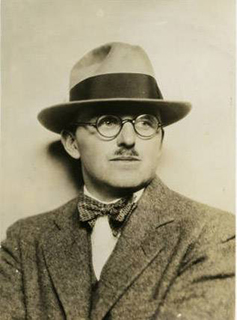
John Gaw Meem IV was an American architect based in Santa Fe, New Mexico. He is best known for his instrumental role in the development and popularization of the Pueblo Revival Style and as a proponent of architectural Regionalism in the face of international modernism. Meem is regarded as one of the most important and influential architects to have worked in New Mexico.

The Pueblo Revival style or Santa Fe style is a regional architectural style of the Southwestern United States, which draws its inspiration from Santa Fe de Nuevo México's traditional Pueblo architecture, the Spanish missions, and Territorial Style. The style developed at the beginning of the 20th century and reached its greatest popularity in the 1920s and 1930s, though it is still commonly used for new buildings. Pueblo style architecture is most prevalent in the state of New Mexico, it is often blended with the Territorial Revival architecture.

Pablita Velarde born Tse Tsan was an American Pueblo artist and painter.
Emil Bisttram (1895–1976) was an American artist who lived in New York and Taos, New Mexico, who is known for his modernist work.

The New Mexico Museum of Art is an art museum in Santa Fe governed by the state of New Mexico. It is one of four state-run museums in Santa Fe that are part of the Museum of New Mexico. It is located at 107 West Palace Avenue, one block off the historic Santa Fe Plaza. It was given its current name in 2007, having previously been referred to as The Museum of Fine Arts.

Raymond Jonson, was an American-born Modernist painter known for his paintings of the American Southwest. Born Carl Raymond Johnson, he originally signed his paintings C. Raymond Johnson, but later used Raymond Jonson, dropping the first initial and reverting to a more traditional spelling of his last name.

Charles William Bolsius - was born in 's-Hertogenbosch, the Netherlands, the youngest in an upper-middle-class bourgeoisie family. His father ran the regional Gas Works and Bolsius formally studied art in The Hague before emigrating to the United States and moving to New Mexico in the early 1930s. He quickly assimilated into the art communities of Albuquerque and Santa Fe showing with the significant artist of the period. Bolsius had artistically matured within Dutch - German Expressionism. His woodblock handprints, using subject matter from the American West, capitalized on flat, bold, stark patterns and rough-hewn effects that were hallmarks of the expressionist woodblock tradition. His heavy light-filled moody paintings with cloudy brooding skies combined expressionistic influences with expansive western landscapes and the optimism of American impressionism. His work was critically recognized and exhibited at major museums and galleries throughout New Mexico and Arizona.
Alan Paine Radebaugh, a contemporary American artist, was born May 2, 1952, in Boston, Massachusetts, was raised in Maine and New York, and moved to New Mexico in 1979.
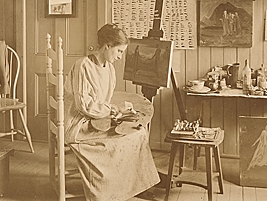
Agnes Lawrence Pelton (1881–1961) was a modernist painter who was born in Germany and moved to the United States as a child. She studied art in the United States and Europe. She made portraits of Pueblo Native Americans, desert landscapes and still lifes. Pelton's work evolved through at least three distinct themes: her early "Imaginative Paintings," art of the American Southwest people and landscape, and abstract art that reflected her spiritual beliefs.

Willy Bo Richardson is an American artist. Richardson is regarded as one of many contemporary painters revisiting late Modernism. Describing his paintings as “philosophy in motion,” Richardson paints vertical strokes of color. He exhibits his paintings internationally.
Florence Melva Piercenée Miller was an American artist best known for her innovative resin relief paintings. Her work has often been linked with monochrome painting and minimalism.

Tonita Peña born as Quah Ah but also used the name Tonita Vigil Peña and María Antonia Tonita Peña. Peña was a renowned Pueblo artist, specializing in pen and ink on paper embellished with watercolor. She was a well-known and influential Native American artist and art teacher of the early 1920s and 1930s.
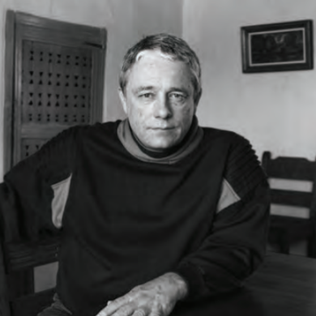
Harold Joe Waldrum was an American artist whose abstract works depict color studies especially of the old adobe churches of Northern New Mexico. He also used a Polaroid SX-70 camera to photograph many of the churches, initially as part of the process in creating his paintings. However, this collection of thousands of photographs became a body of work in and of itself and was exhibited at several galleries and museums.
Cady Wells was a painter and patron of the arts who settled in New Mexico the 1930s. He has been the subject of numerous solo exhibitions, during his life and posthumously.

Constance DeJong is a visual artist who works in the margin between sculpture and painting/drawing. Her predominate medium is metal with light as a dominant factor. She is currently working in New Mexico and is a professor of sculpture at the University of New Mexico. DeJong received a National Endowment for the Arts Visual Art Fellowship in 1982. In 2003, she had a retrospective at the Albuquerque Museum of Art and History. That same year, Constance DeJong: Metal was published and released by University of New Mexico Press. Her work has been described by American art critic Dave Hickey as "work worth seeing and thinking about under any circumstances".
Joe Hilario Herrera, was an American Pueblo painter, teacher, radio newscaster, politician, and a Pueblo activist; from a mixed Cochiti and San Ildefonso background. He was the son of the artist Tonita Peña, and had trained at the Santa Fe Indian School.
Romando Vigil, also known as Tse Ye Mu was a Native American self-taught painter and a leader in the San Ildefonso school. He briefly worked for Walt Disney Studios as a painter and illustrator in the 1950s.
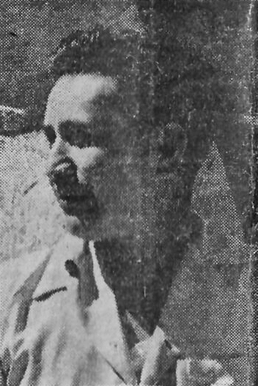
Percy Tsisete Sandy, was a Zuni artist. His native name was Kai-Sa ; he is also known as Percy Sandy Tsisete. His paintings were signed with the name Kai-Sa.
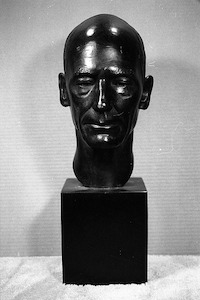
Kenneth M. "Chap" Chapman (1875–1968) was an art historian, arts administrator, anthropologist, writer, teacher, and researcher of Native American art and culture in Santa Fe, New Mexico. The New Mexico Archive said of Chapman: "An advocate of Indian arts, his endeavors led to the revitalization of Pueblo pottery, the founding of the first Indian Fair and the Indian Arts Fund."
References
- ↑ Weideman, Paul. "Art of Space — Soul-ar design: Artist and architect William Lumpkins". Pasatiempo. Santa Fe New Mexican. Retrieved 14 January 2016.
- ↑ Wiggins, Walt (1990). William Lumpkins : Pioneer Abstract Expressionist. Ruidoso Downs, N.M.: Pintores Press. ISBN 0934116105.
- ↑ Wilson, Chris (1990). Pueblo Style and Regional Architecture. New York: Van Nostrand Reinhold. p. 188. ISBN 0442318960.
- ↑ Pueblo Architecture and Modern Adobes. OCLC. OCLC 38964009.
- ↑ Rijmes, Joanne (1997). Living Treasures : Celebration of the Human Spirit. Santa Fe, NM: Western Edge Press. p. 106. ISBN 1889921009.
- ↑ "Guide to the William T. Lumpkins Papers, 1930-1982". Rocky Mountain Online Archive. Museum of New Mexico, The Palace of the Governors, Fray Angélico Chávez History Library. Retrieved 14 January 2016.
- ↑ Wilson, Malin (1987). William Lumpkins : Works on Paper 1930-1986. Albuquerque, N.M.: The Jonson Gallery, University Art Museum. ISBN 0944282016.
- ↑ "Artist Biography for William Lumpkins". AskArt. Retrieved 14 January 2016.
- ↑ Falk, Peter (1999). Who Was Who in American Art 1564-1975 vol. II. Madison, CT: Sound View Press. p. 2081. ISBN 0932087574.
- ↑ McGraw, Kate (3 August 2007). "Gesture of Balance : Annual William Lumpkins show at Peyton Wright promises choices". Albuquerque Journal North.